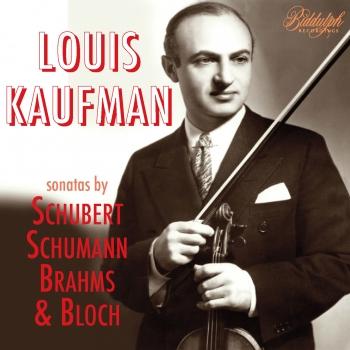Louis Kaufman
Biographie Louis Kaufman
Louis Kaufman
Possibly the most recorded violinist of all time, Louis Kaufman enjoyed a playing career that spanned almost seventy years. Despite an apparent avoidance of any rigorous training he won the Loeb Prize in 1927 and the Naumburg Award in 1928, precipitating a début recital in New York’s Town Hall and subsequent extensive touring and concerto appearances.
Moving to Los Angeles in 1933 Kaufman, like Toscha Seidel, was swept up into the Hollywood fold and provided solos for several hundred films with all the major studios over the next fourteen years. He still managed to pursue ‘serious’ playing, making very popular recordings of concertos by Khachaturian and Saint-Saëns and, in 1947, the first-ever recording of Vivaldi’s ‘Four Seasons’ concertos in their original and complete form.
After moving to Paris in 1948 Kaufman’s first major project was to locate and record (in 1950) the further eight concertos of Vivaldi’s Op. 8, Il cimento dell’ armonia e dell’ invenzione. The rapidly expanding LP industry proved highly fruitful for Kaufman who notched up well over one hundred major recordings before retiring in his seventies. He premièred a significant number of concertos and introduced American works to European audiences, notably concertos by Piston and Barber, and Copland’s Violin Sonata (recorded with Copland at the piano).
Kaufman’s playing on record reveals a refined and warm tone, richly presented with considerable intensity. His vibrato is continuous but always carefully controlled and quite fast, lending power and directness especially in the driven 1945 performance of Khachaturian’s D minor Concerto and an engaging Bennett Song Sonata. Kaufman retained a relatively frequent use of the portamento, which gives the famous first recording of Barber’s Violin Concerto (1951) a soft and romantic edge. His somewhat spurious uses of the device in Vivaldi’s Le quattro stagione sound incongruous to our historically-aware ears and yet, along with some challenging tempo variations, give a sense of whimsy to the performance which is compelling. There is sometimes a thickness to his sound which can work well, as in the rather ponderous Concerto, Op. 42 by Larsson (c. 1952). Kaufman’s playing is not necessarily to the taste of the present time, but cannot fail to be admired for its integrity.











